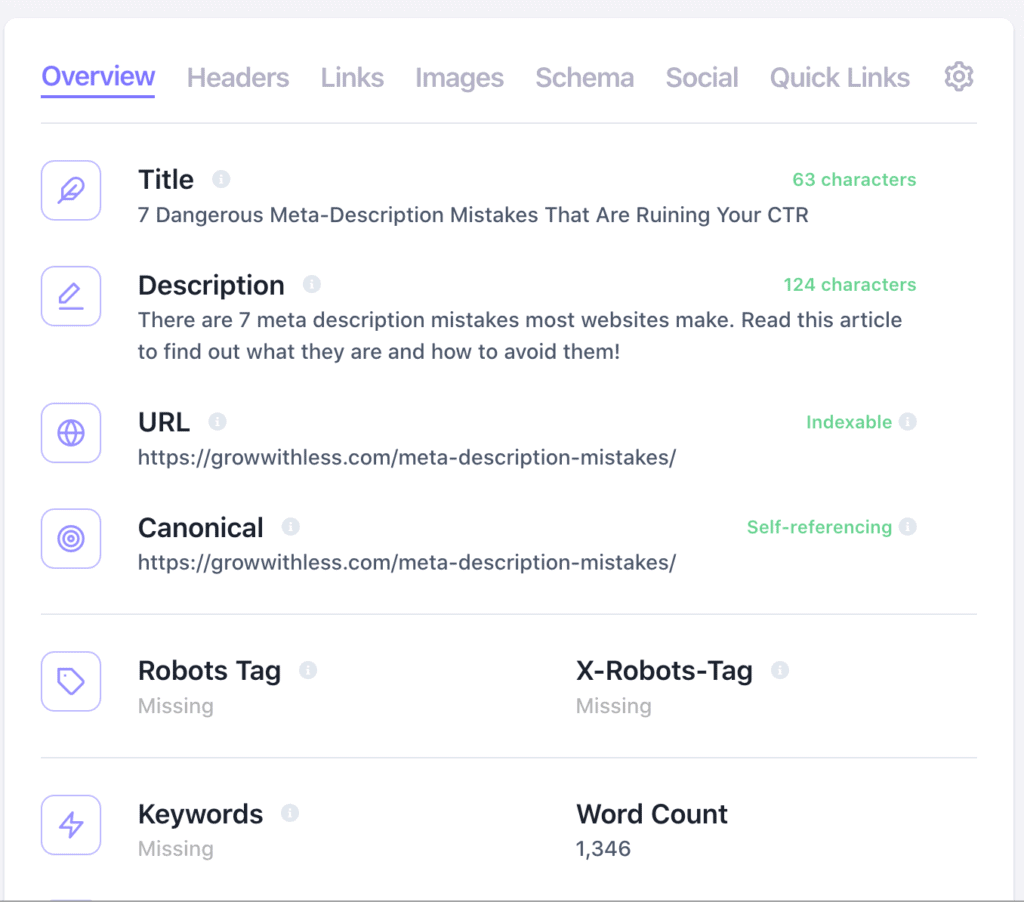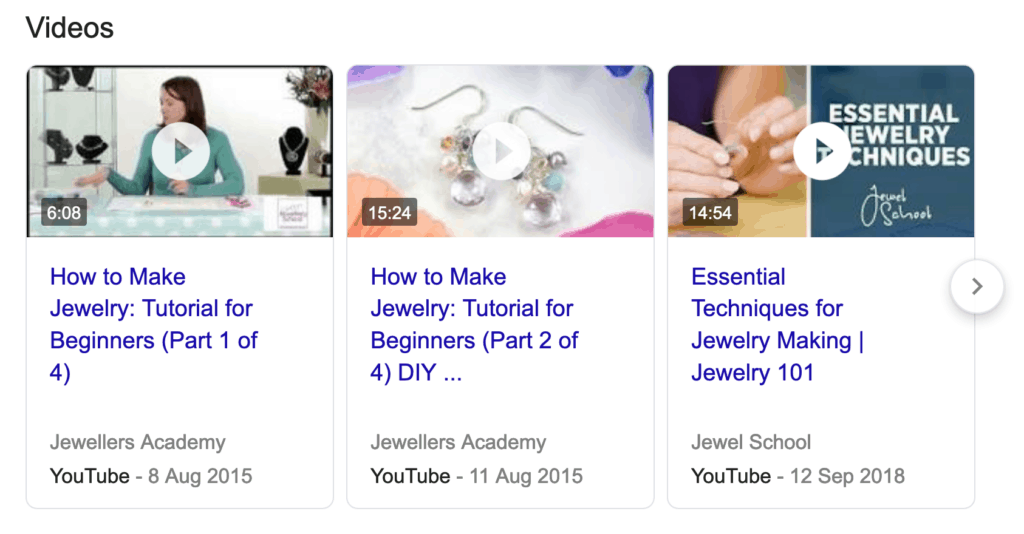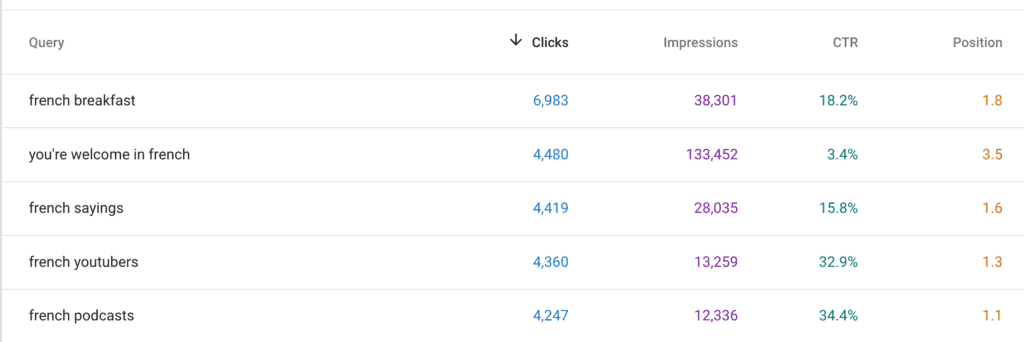I have some bad news.
Writing great content, building quality backlinks and having catchy blog post titles is not enough.
You could have all this and still get very little traffic.
Why?
Because you need people to choose your article over competing articles in the search results.
And the best way to do that is to have a catchy blog post title and an awesome meta description.
Luckily, writing a good meta-description is not that hard.
All you need to do is avoid these 7 mistakes!
Mistake #1: Ignoring meta description length
The meta description is an HTML tag used to tell search engines what description to use for your page in search results.

The bad news is that there is no set meta description length. Instead, Google relies on the number of pixels available (usually 284 pixels on mobile).
If your meta description takes more space than that, Google is likely to shorten it or generate one.
Luckily, there are tools you can use to make sure your meta description fits.
SEO plugins like Yoast SEO and The SEO Framework show you how your meta description is likely to look in the search results.

They don’t always get it right though so I like to also use Mobile SERP’s, a Google snippet simulator for mobile phones.
Neither of these tools will guarantee 100% success but using them should help you get it right in most cases.
Mistake #2: Having duplicate meta descriptions
Writing a good meta description can be a pain so it’s tempting to use the same meta description on several pages.
This won’t hurt your rankings because meta descriptions are not a ranking factor.
However, Google is more likely to rewrite your meta description if it’s used on a lot of pages.
That’s why I always recommend avoiding duplicate meta descriptions when possible.
Mistake #3: Not having a meta description
Not having a meta description is the SEO equivalent of not voting. The only difference is that instead of letting others decide for you, you let Google decide for you.
Something they will often do by using the first parapgraph of your article as a meta description.
So please, do not leave your meta descriptions empty.
You can use the awesome Detailed SEO extension to check the presence of a meta description on pages you visit.

Or you could rely on your SEO plugin to bring empty meta descriptions to your attention.
Mistake #4: Not matching search intent
“Searcher’s intent is the 8th wonder of the world.”
Albert Einstein
Pretty sure he said that at some point.
Okay fine, he was talking about compound interest but still.
Search intent or searcher’s intent is the main motivation behind the search and understanding it is essential if you want to rank.
It’s also essential if you want to write a good meta description because the main goal of the meta description is to show the user your article is exactly what they are looking for
In fact, Google will often rewrite your meta description if they think it doesn’t match search intent.
https://youtu.be/3n_4B7ZXjjI?t=3157
This can lead to hilarious results such as the one Nikola Roza recently shared with me.

Understanding search intent can be straightforward.
Someone searching “Chinese restaurant Boulder” wants to find a Chinese restaurant in Boulder and is probably hungry.
But some queries are less clear
Someone googling “smartwatch” could be looking to buy a smartwatch right now or they could be looking for reviews of the best smartwatch.
They may also be wondering whether buying a smartwatch is worth it and expect an article walking them through the pros and cons of owning one.
The best way to determine search intent (besides knowing your audience) is to look at the search results.
For a keyword like “how to make jewelry”, Google lists articles and videos teaching how to make jewelry.

This is an informational search so you need a meta description that promises to show people how to make jewelry.
On the other hand, people searching “jewelry shop Denver” are most likely looking to buy jewelry and not make their own. In this case, promising to teach them how to make jewelry is unlikely to work.
To learn more about search intent, read this excellent article on Ahrefs’ blog.
Mistake #5: Not using keywords
A good way to show google your meta description matches search intent is to mention your keyword(s) in it.
This will also help you stand out because Google highlights keywords in meta descriptions.

Just make sure your use of the keyword sounds natural. Nobody wants to click on a search result that looks like it was written by C-3PO.
Mistake #6: Writing a bland meta description
The main goal of your meta description is to convince users to choose your article over your competitors'
And while there is no one-size-fits-all formula for writing great meta descriptions, there are a few rules you should follow;
- Offer a clear benefit
- Avoid the passive voice
- Use action verbs
- Offer something your competitors don’t mention
- Don’t promise more than you can offer
Mistake #7: Trying to overoptimize
There are times when Google won’t use your meta description even though it perfectly matches search intent.
And you could try to tweak it so Google uses it.
But you need to ask yourself: is it worth it?
The best way to find out is to open the Google Search Console and look at the CTR of your articles.

If an article already has a great CTR, there is no point in trying to convince Google to use your meta description.
- 30%: you are doing great!
- 20%: Pretty good.
- Less than 20%: you have work to do.
Keep in mind that your CTR will depend enormously on how high your article ranks. Articles that rank first tend to have a much higher CTR while CTR goes down with every position in the search results.
This means that while 10% is a bad CTR for an article ranking in the first position, it’s amazing for an article ranking in position 7.
You also need to take other factors into consideration such as your headline and brand reputation.
Keep in mind that these mistakes are general guidelines. I recommend following them in most cases but there are specific cases when you will want to ignore them.
The best way to improve your meta description is simply to write more meta descriptions, see how they perform and learn what works best in your niche.
Not sure where to start with your meta description? Here are 10 templates you can use!